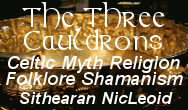Ariadne's Tribe: Minoan Spirituality for the Modern World
Walk the sacred labyrinth with Ariadne, the Minotaur, the Great Mothers, Dionysus, and the rest of the Minoan family of deities. Ariadne's Tribe is an independent spiritual tradition that brings the deities of the ancient Minoans alive in the modern world. We're a revivalist tradition, not a reconstructionist one. We rely heavily on shared gnosis and the practical realities of Paganism in the modern world. Ariadne's thread reaches across the millennia to connect us with the divine. Will you follow where it leads?
Find out all about Ariadne's Tribe at ariadnestribe.com. We're an inclusive, welcoming tradition, open to all who share our love for the Minoan deities and respect for our fellow human beings.
The Minoan Flock: The shrine or the dinner table?
CW: Meat eating and animal slaughter/sacrifice
Animals show up a lot in Minoan art and in religious iconography from ancient Crete. In MMP we tend to pay special attention to the ones associated with deities - the Horned Ones, for instance, the deities connected with cattle, goats, and deer.
It's clear from the archaeological record that, in addition to revering these animals as earthly reflections of certain deities, the Minoans also slaughtered them and ate their meat on a regular basis. Animals that were ritually sacrificed were also eaten, probably by temple clergy.
But interestingly, the meat the Minoans ate the most doesn't appear to be connected with a deity - or at least, not one that we've identified yet. [UPDATE: We've found a connection; see note at end of post.]
That kind of meat? Mutton.
About 90% of the meat remains found at archaeological sites are from sheep.
The Minoans had a big wool industry, even before the Mycenaean occupation when the numbers of sheep skyrocketed dramatically at Knossos and Phaistos. So it makes sense that they would have eaten a lot of mutton.
The sheep that the Minoans raised were a curly-horned breed, most likely imported from Mesopotamia. You can see a couple of them in the image at the top of this post. It's a drawing of a stone seal from Siteia, Crete showing two sheep (they could be rams or ewes - both sexes had horns) with an undeciphered Linear A symbol between them.
We don't know whether or not the Minoans associated a deity with sheep. Since the sheep were originally imported from elsewhere, it's possible that they made it to Crete without any religious encumbrance, as just another type of livestock.
It's also possible that a deity was imported along with the sheep, so to speak - Dumuzid, for instance, is a pastoral god from the region the Minoans' sheep probably came from. If that's the case, there's a good chance the imported deity was altered somewhat in the course of being borrowed. That sort of thing happened to the Egyptian goddess Taweret, who morphed into a creature now known as the Minoan Genius (that's a subject for another post).
So we have the hard evidence of the mutton roasts and stews, but we don't know whether the animals had religious significance for the Minoans - at least, not beyond the basic animist concept that they were inspirited beings and not "soulless dumb animals."
I'll end with a photo of my favorite Minoan artifact that involves sheep. This is a bowl from Palaikastro dating to 2000-1800 BCE. Its interior is decorated with a tiny shepherd and flock of sheep.

Image CC BY 4.0 via Wikimedia Commons
NOTE: Since I first wrote this post, our shared gnosis and ritual experience suggests a connection between sheep and the goddesses Ariadne and Arachne. Wool production (spinning and weaving of cloth) was a major industry for the Minoans as well as a common activity in private homes and on farms. Ariadne and Arachne together are connected with the famous ball of thread that winds through the Labyrinth. Arachne in particular is the goddess of spinning, weaving, and other fiber arts (for all fibers, not just wool). Our experience thus far doesn't connect a Minoan god with sheep, though as I noted above, Dumuzid may have "migrated" to Crete among some of the shepherding people, especially if some Mesopotamian people moved to Crete along with the sheep.
Comments
-
Please login first in order for you to submit comments




















